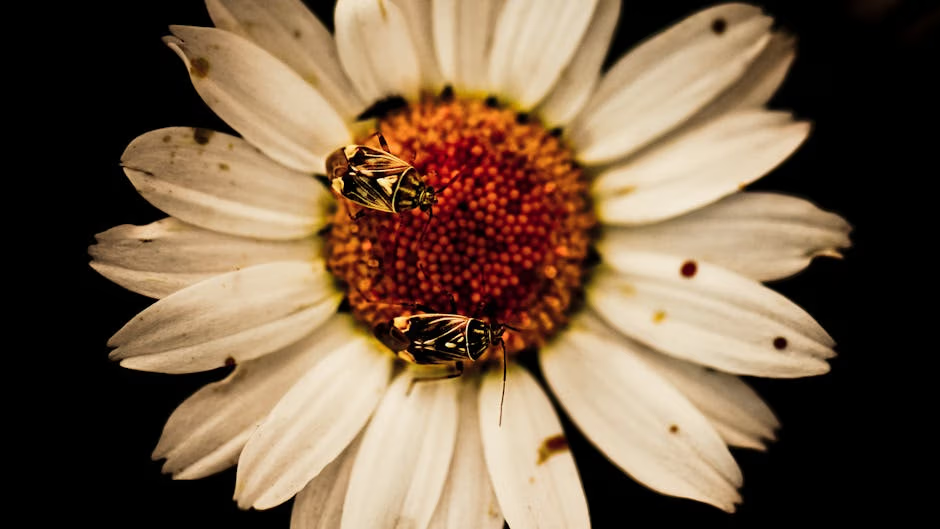Garden pest identification: 5 Proven Methods to Master
Garden pest identification is crucial for maintaining a healthy and thriving garden. By understanding and recognizing the different pests that can invade your garden, you can take timely actions to minimize damage and promote plant health. Here’s a quick overview of common pests you might encounter:
- Beetles and Bugs: Tiny troubles that nibble on leaves and stems.
- Caterpillars: Known for munching through plant foliage quickly.
- Thrips: Small, winged insects that create silvery patches on leaves.
- Tomato Hornworms: Large, green caterpillars that feast on vegetable crops.
- Tent Caterpillars: Create silky tents and devour your trees and shrubs.
With each pest presenting unique challenges, knowing what to look for can make you a true garden sleuth. Early detection is key in saving your precious plants and minimizing harm.
The helpful team at Lowcountry Ace brings their expertise and dedication to supporting garden enthusiasts. With experience in garden pest identification, they are committed to offering guidance and solutions that align with your needs. Stay tuned for more insights on spotting and identifying pests in your garden.
Key terms for Garden pest identification:
– Low-maintenance garden plants
– Decorative garden lighting ideas
– Garden fencing ideas
Common Garden Pests
Identifying garden pests is the first step to managing them effectively. Here’s a rundown of some common pests you might find in your garden:
Aphids
Aphids are small, sap-sucking insects that come in various colors like green, black, yellow, and red. They attack both edible and ornamental plants. Signs of aphid infestation include stunted growth, yellowing leaves, and a sticky substance called honeydew, which can lead to sooty mold. Aphids often attract ants, so if you see ants, check for aphids too.
Bagworms
These pests are known for the protective bags they create, which hang from trees. Bagworms can defoliate trees if not controlled early, especially during their larval stage. Look for small, spindle-shaped bags on your trees as a sign of their presence.
Cabbageworms
Cabbageworms are green, velvety caterpillars with light spots along their backs. They are notorious for creating large, irregular holes in cabbage leaves and can bore into the cabbage head itself. If you notice such damage on your cabbage plants, cabbageworms might be the culprits.
Cicadas
Cicadas are easily recognized by their loud buzzing sound. They leave behind split twigs on trees where they lay eggs. If you see these signs, cicadas might be nesting nearby.
Colorado Potato Beetles
These beetles are distinctive with their yellow bodies and black, brown, and yellow stripes. They skeletonize the leaves of plants in the nightshade family, such as potatoes and tomatoes. Look for clusters of yellow-orange eggs on leaf undersides.
Corn Earworms
These ravenous pests feed on the tips of corn, tomatoes, and bean pods, leaving behind brown excrement. They can vary in color from brown to light pink and are about 1.5 inches long when mature.
Cucumber Beetles
Cucumber beetles are yellow with black stripes or spots. They damage plants by feeding on leaves, fruits, and roots, making plants susceptible to wind damage. They commonly target cucumbers, melons, and squashes.
Flea Beetles
These tiny beetles jump like fleas and create small, round holes in leaves. They are especially problematic for young plants and can stunt growth if left unchecked.
Japanese Beetles
Japanese beetles are metallic green and bronze beetles that feed on the leaves, flowers, and fruits of many plants. They skeletonize leaves, leaving only the veins.
Lace Bugs
These bugs are small and have lace-like wings. They suck sap from the underside of leaves, causing yellow spots and sometimes leaf drop.
Leafhoppers
Leafhoppers are small, wedge-shaped insects that jump quickly. They suck sap from plants and can transmit diseases, leading to distorted growth.
Mexican Bean Beetles
These beetles look like yellow ladybugs with black spots. They feed on the undersides of bean leaves, leaving a lace-like pattern.
Scale
Scale insects appear as small bumps on plant stems and leaves. They suck sap, causing yellowing and weakening of plants.
Slugs and Snails
These pests are easily identified by their slimy trails. They feed on leaves, leaving large, irregular holes.
Spittlebugs
Spittlebugs are known for the frothy spittle they produce on plant stems. They are usually more of a nuisance than a serious threat.
Squash Bugs
Squash bugs are brownish-black and feed on the sap of squash plants, causing wilting and yellowing.
Stink Bugs
Stink bugs are shield-shaped and release a foul odor when disturbed. They feed on fruits and vegetables, causing discoloration and deformation.
Tent Caterpillars
These caterpillars create silky tents in trees and shrubs and can defoliate branches rapidly.
Thrips
Thrips are tiny, slender insects that feed on plant sap, causing silvery patches and distorted growth.
Tomato Hornworms
These large, green caterpillars have a horn-like tail and can quickly defoliate tomato plants. Look for them on leaves and stems.
Identifying these pests early can save your garden from significant damage. The helpful team at Lowcountry Ace is always ready to offer advice and solutions custom to your gardening needs. Stay tuned for more on how to effectively identify pests in your garden.
Garden Pest Identification
Identifying pests in your garden is crucial to maintaining healthy plants. Recognizing the signs of infestation early can prevent severe damage. Common signs include:
- Chewed Leaves: Look for irregular holes or skeletonized foliage. This often indicates beetles or caterpillars.
- Discolored Spots: Yellow or brown spots on leaves can be caused by sap-sucking insects like aphids or lace bugs.
- Wilting or Stunted Growth: This may be due to root damage from underground pests or sap loss from insects like scale.
- Excrement: Look for droppings around feeding areas, which are often left by caterpillars or earworms.
Insect Damage
Different pests leave distinct marks on plants. For example, Japanese beetles skeletonize leaves, leaving only the veins, while slugs and snails create large, irregular holes. Understanding these patterns helps in identifying the pest responsible.
Pest Identification Apps and Charts
Technology can be a gardener’s friend. Pest identification apps are available to help you recognize pests quickly. Simply take a photo of the insect or damage, and the app suggests possible matches. These apps can be a handy tool for both novice and experienced gardeners.
Additionally, a garden pest identification chart can be an invaluable resource. These charts provide images and descriptions of common pests, making it easier to match what you see in your garden. Keep a chart handy for quick reference.
Using these tools, along with regular inspections, can help you stay ahead of potential pest problems. If you’re ever unsure, the helpful team at Lowcountry Ace is always ready to assist with advice custom to your gardening needs. Now that you know how to identify pests, let’s explore methods for identifying them more precisely.
Methods for Identifying Pests
Identifying garden pests accurately is key to effective control. Here are some methods to help you become a garden pest identification expert:
Visual Inspection
Start with a visual inspection. Regularly check your plants for signs of damage or the pests themselves. Look under leaves, along stems, and in the soil. This is often the quickest way to spot issues.
- Check for Movement: Some pests, like aphids, are tiny and cluster on stems. Look closely for movement.
- Examine Leaf Undersides: Many pests, such as spider mites, hide on the underside of leaves.
Pest Identification Apps
Technology can be a gardener’s best ally. Pest identification apps allow you to snap a photo of the insect or damage and get instant feedback on what it might be. These apps use databases that compare your image to known pests.
- Quick and Convenient: Perfect for on-the-spot identification.
- Educational: Learn more about the pests affecting your plants.
Insect Morphology
Understanding insect morphology can help you identify pests. Insects have unique body structures, which can be clues to their identity.
- Body Regions: Insects have three main body parts: the head, thorax, and abdomen.
- Wings and Legs: The number and type of wings and legs can help distinguish between insect types.
Metamorphosis
Many insects undergo metamorphosis, changing form as they mature. Knowing the stages can help you identify pests at various life stages.
- Complete Metamorphosis: Insects like beetles have four stages: egg, larva, pupa, adult.
- Incomplete Metamorphosis: Insects like grasshoppers have three stages: egg, nymph, adult. Nymphs often resemble smaller versions of adults.
By combining these methods, you can identify pests more effectively and take action quickly. If you need further assistance, the team at Lowcountry Ace is ready to help with expert advice and solutions custom to your garden’s needs.
Now that you have the tools to identify pests, let’s discuss how to control and prevent them effectively.
Control and Prevention Strategies
Once you’ve identified the pests, the next step is to control and prevent them from wreaking havoc in your garden. Here are some strategies to help you keep your garden healthy and thriving.
Pesticides
Pesticides can be an effective way to control garden pests. Sevin Insect Killer is a popular choice among gardeners. It targets over 500 insect pests and provides protection for up to three months. It’s crucial to follow the product label instructions carefully to ensure safety and effectiveness.
- Broad Spectrum: Sevin kills a wide range of pests, including tent caterpillars and tomato hornworms.
- Timing: You can treat many garden edibles right up to one full day before harvest.
Natural Predators
Introducing natural predators to your garden is a sustainable way to control pest populations. Beneficial insects like ladybugs and lacewings can help keep aphids and other pests in check.
- Ladybugs: These insects are voracious eaters of aphids and can be a gardener’s best friend.
- Lacewings: Known for eating soft-bodied insects, lacewings are effective in controlling thrips.
Garden Maintenance
Regular garden maintenance is key to preventing pest infestations. Healthy plants are more resistant to pests, so keep your garden well-maintained.
- Prune Regularly: Remove dead or damaged plant parts to prevent pests from settling.
- Clean Tools: Disinfect garden tools to prevent the spread of plant diseases and pests.
Sevin Insect Killer and GardenTech
For a trusted solution, many gardeners turn to GardenTech products, including Sevin. These products have been trusted for over 50 years to protect gardens from pests.
- Long-Lasting Protection: Sevin keeps protecting your garden for months.
- Versatile Use: Suitable for fruit and vegetable gardens, ornamental plants, and lawns.
By combining these strategies, you can effectively manage garden pests and enjoy a vibrant, pest-free garden. Whether you choose chemical solutions or natural methods, maintaining a balanced approach will ensure your garden thrives.
Next, we’ll address some common questions about garden pest identification and management.
Frequently Asked Questions about Garden Pest Identification
How do I identify pests in my garden?
Identifying pests in your garden can be a straightforward process if you know what to look for. Visual inspection is the first step. Check your plants regularly for any unusual signs like holes in leaves, discolored foliage, or sticky residue.
- Aphids often leave a sticky substance called honeydew.
- Cabbageworms create large, irregular holes in leaves.
If you’re unsure, you can use pest identification apps. These apps allow you to take pictures of the damage or the pest itself and provide you with possible matches. Another handy tool is a garden pest identification chart, which can help you match pests to the damage they cause.
What are the most common signs of garden pests?
Common signs of garden pests include:
- Bite Marks: Irregular holes or chewed edges on leaves.
- Discoloration: Yellowing or browning of leaves.
- Sticky Residue: Honeydew on leaves, often accompanied by sooty mold.
- Wilting: Plants that droop even when adequately watered.
- Presence of Insects: Seeing the pests themselves, like beetles or caterpillars.
For example, Japanese beetles are known for skeletonizing leaves, while slugs and snails leave a slimy trail as they move.
Is there an app to identify garden pests?
Yes, there are several apps available to help with garden pest identification. These apps allow you to take a photo of the pest or the damage and compare it against a database of common pests.
- Seek by iNaturalist: Offers identification of insects and plants through image recognition.
- PictureThis: Primarily for plants, but it also helps in identifying pests based on plant damage.
These apps can be a quick and convenient way to identify pests and learn about their control methods. The helpful team at Lowcountry Ace can also provide advice and resources to help you manage pests effectively.
Conclusion
At Lowcountry Ace, we understand that keeping your garden healthy and pest-free can be a challenge. That’s why we’re committed to providing exceptional customer service and local convenience to the James Island, Folly Beach, and Charleston communities. Our knowledgeable team is always ready to assist you with expert advice and the right garden supplies to tackle any pest problem.
Whether you’re dealing with aphids, beetles, or even slugs, we have a wide range of pest control solutions that suit your needs. From organic options to more traditional pesticides, we make sure you have all the tools to protect your garden.
Local convenience is at the heart of what we do. Located at the Riverland Market on Folly Road, our store offers not only a comprehensive selection of gardening tools and pest control products but also home delivery services for a seamless shopping experience.
For those looking to stay ahead of garden pests, we also provide resources and tips through our in-store team and online guides. Our home improvement tools page is a great starting point to explore the various products and services we offer.
A healthy garden is just a visit away at Lowcountry Ace. Let us help you keep your garden vibrant and pest-free!
Lowcountry Ace Hardware: Your one-stop shop for home improvement. We offer quality products from trusted brands and expert advice from our experienced staff. Located on James Island, visit us for tools, hardware, fishing gear, power tools, building materials, grills & smokers, electrical and plumbing supplies, and more.






